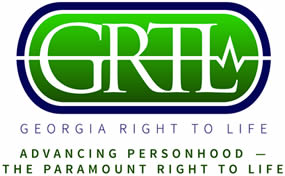 The National Network for Organ Donors, and other similar organizations, work to ensure that “every single person in the United States who needs a transplant gets one”. Clearly, organ donation has changed the face of medicine for nearly 50 years, but at what cost? No one could have envisioned the growth that transplantation science would achieve or how it would affect biomedical ethics, essentially redefining death.
The National Network for Organ Donors, and other similar organizations, work to ensure that “every single person in the United States who needs a transplant gets one”. Clearly, organ donation has changed the face of medicine for nearly 50 years, but at what cost? No one could have envisioned the growth that transplantation science would achieve or how it would affect biomedical ethics, essentially redefining death.
Beating heart cadavers, those thought to be brain dead, traditionally receive no anesthetics during an organ harvest operation. They have been seen to react just as inadequately anesthetized live patients would, however. “I like my dead people cold, stiff, gray and not breathing,” says Dr. Michael A. DeVita of the University of Pittsburgh Medical Center. “The brain dead are warm, pink and breathing.”
Warm, pink and breathing sounds an awful lot like someone that is alive to me, not dead. It is a scary thought to consider that these ‘beating heart cadavers’ feel the pain of surgery – and scarier yet, what if they have been declared dead before their time?
Current criterion on brain death was set by a Harvard Medical School committee in 1968. Brain death quickly became a legal form of death in all 50 states, set forth by the Uniform Determination of Death Act, or UDD. ‘Beating heart cadavers’, or BHC’s, are an attempt to meet a growing need for transplant organs and keep those organs suitable for transplant surgery.
An organ donor gives up more than simply their organs. They give up their right to informed consent and so much more. And what about the families involved?
The exam for brain death is relatively simple and includes several simple tests with ice water, cotton swabs and a check for independent breathing and any gag reflex. The tests may be repeated in several hours for further confirmation.
Brain dead patients, however, might still emit brainwaves. While the original Harvard committee called for EEG, or electroencephalography, to determine higher brain activity, this was suspended in 1971. Today’s tests concentrate on the stalk-like brain stem, in charge of basics such as breathing, sleeping and waking. It is assumed that the higher centers of the brain are dead if the brain stem is dead.
Once thought to be something out of a science fiction novel, the first kidney transplant took place in 1954. By the 1960’s transplant surgery had become more and more common place. Chronic rejection and organ shortage are the major enemies of transplant patients. While medicine continues to work to improve organ rejection scenarios, the organ shortage has caused doctors and needy patients to turn to live donors, or ‘beating heart cadavers’.
Organ transplantation is considered the best option for thousands of patients each year. Patients wait months and even years, and as many as 5,000 will die each year waiting for an organ donation. Since 1982, at least 416,457 people in the United States have received new ‘parts’ – kidneys, hearts, livers, lungs, and more. In 2011 alone, doctors in the US performed some 21,000 organ transplants.
The business of organ transplantation is a $20 billion per year production. Medical doctors that perform transplants are historically top earners in their field. Recipients of single-organ transplants are charged between $288,000 and $1.2 million, depending on the case, according to Milliman. Neither donors nor their families can be paid for organs.
Brain death does not always mean that the body will deteriorate rapidly. Numerous situations describe brain dead patients who breathe on their own, cough, gasp for air, and even move their arms and legs. Indeed, a variety of functions and processes will continue: bedsores will form, wounds will heal and children will mature sexually and grow proportionally. A brain dead pregnant woman can even continue to gestate her own baby!
The definition of death has changed over time. The effects have already been seen in the acceptance of brain death criterion, the popularity of anatomical gift acts and the expansion of biomedical ethics. We can’t know where the science of organ transplantation will lead us, but clearly it would behoove us to have that difficult conversation with our loved ones.
For help with specific information on other life issues, please e-mail us at stateoffice@grtl.org.
